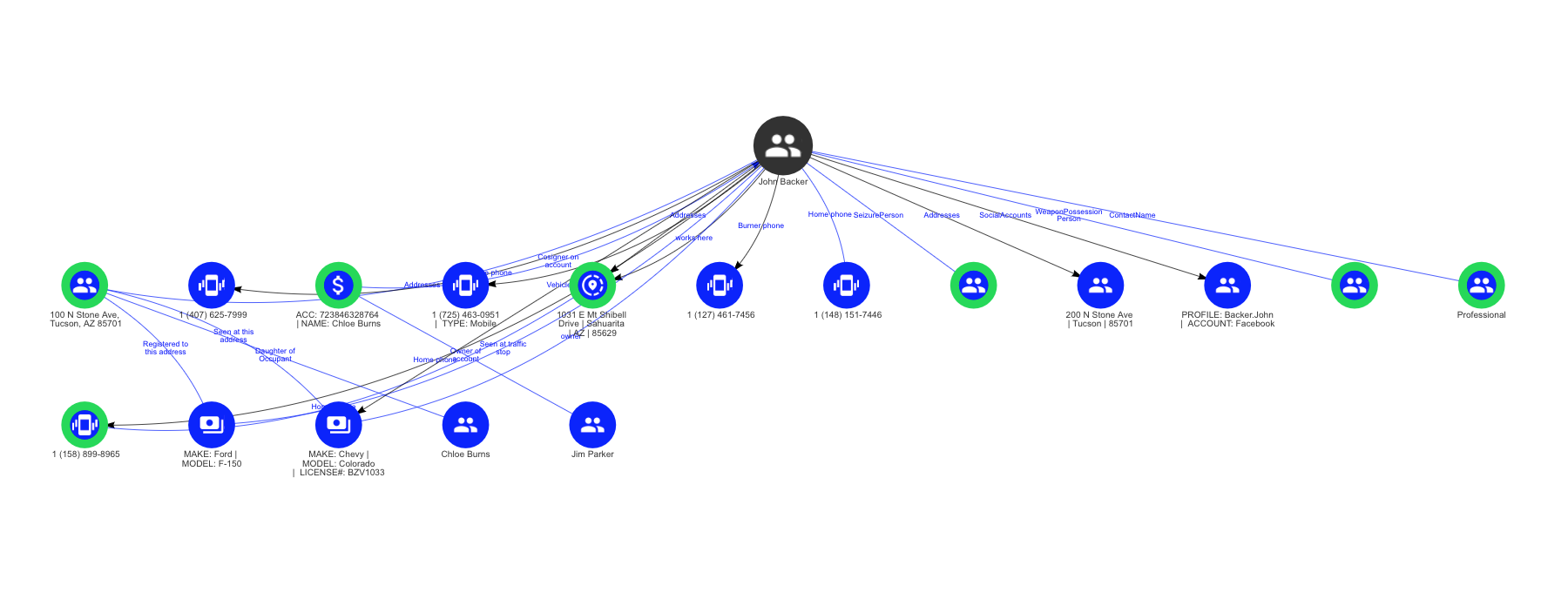What is data analysis in law enforcement?
Data analysis in law enforcement is a critical tool that helps agencies make informed decisions and solve crimes more effectively. It involves collecting and examining large sets of data to identify patterns, trends, and correlations that can aid in investigations and crime prevention strategies. By analyzing data, law enforcement professionals can uncover valuable insights and intelligence that may not be immediately apparent. This process allows them to allocate resources more efficiently, identify high-crime areas, and even predict potential criminal activity. Data analysis in law enforcement is an indispensable tool that empowers agencies to better understand and respond to the complex challenges they face in maintaining public safety.

The role of data analysis in solving crimes
Data analysis plays a pivotal role in solving crimes within law enforcement. By examining and interpreting vast amounts of data, law enforcement agencies can uncover patterns, trends, and connections that may otherwise go unnoticed. This analytical approach allows investigators to make informed decisions, allocate resources effectively, and identify potential suspects. Furthermore, data analysis enables law enforcement to anticipate criminal activity and prevent future crimes. Through the use of advanced tools and techniques, such as predictive modeling and data visualization, agencies can gain valuable insights that aid in solving cases and ensuring public safety.
How data analysis helps in identifying patterns and trends
Data analysis plays a pivotal role in law enforcement by helping to identify patterns and trends that may otherwise go unnoticed. By examining large sets of data, law enforcement agencies can uncover valuable insights and make informed decisions to prevent and solve crimes. Data analysis techniques, such as predictive modeling and data mining, allow law enforcement professionals to identify common characteristics and behaviors among criminals, enabling them to allocate resources effectively and target their efforts where they are most needed. Additionally, data analysis can help identify emerging crime patterns, allowing law enforcement agencies to proactively respond and prevent future incidents. In an era where data is abundant, harnessing the power of data analysis is increasingly essential for law enforcement agencies to enhance public safety and protect communities.
The importance of data analysis in predicting and preventing crime
Data analysis plays a critical role in modern law enforcement by enabling agencies to predict and prevent crime more effectively. By analyzing vast amounts of data from various sources, such as criminal records, incident reports, and social media, law enforcement agencies can identify patterns and trends that help them allocate resources strategically. This data-driven approach allows agencies to proactively target high-crime areas, identify potential hotspots, and deploy officers and resources where they are most needed. Additionally, data analysis can help law enforcement agencies identify individuals who are at a higher risk of becoming involved in criminal activities, allowing for early intervention and prevention efforts. Overall, data analysis is a powerful tool that empowers law enforcement agencies to stay one step ahead in the fight against crime.
The use of data analysis in resource allocation and strategic planning
Data analysis plays a critical role in law enforcement, particularly in the areas of resource allocation and strategic planning. By analyzing data, law enforcement agencies can identify patterns, trends, and hotspots of criminal activity, allowing them to allocate their resources effectively. This data-driven approach helps law enforcement agencies make informed decisions on where to deploy officers, how to distribute funding, and which areas require additional attention. Furthermore, data analysis enables law enforcement agencies to develop strategic plans to address long-term issues and prevent crime. By understanding the importance of data analysis, law enforcement agencies can enhance their effectiveness and maximize their impact on public safety.
The challenges and limitations of data analysis in law enforcement
Data analysis plays a crucial role in modern law enforcement, providing valuable insights that can help solve crimes, identify patterns, and improve overall public safety. However, it is important to acknowledge the challenges and limitations that come with this process. One of the main challenges is the vast amount of data that law enforcement agencies have to deal with, ranging from crime reports to surveillance footage. Analyzing and interpreting this data can be a time-consuming and complex task. Additionally, data analysis in law enforcement is not without limitations. Factors such as incomplete or inaccurate data, privacy concerns, and biases can impact the effectiveness and reliability of the analysis. Therefore, it is essential for law enforcement agencies to have skilled analysts who understand these challenges and limitations and can navigate them effectively to make informed decisions and support investigations.
The use of technology in data analysis for law enforcement
The use of technology in data analysis for law enforcement is a game-changer in the fight against crime. With the advancements in data collection and processing, law enforcement agencies can now analyze vast amounts of information to identify patterns, trends, and connections that were once impossible to detect. This allows investigators to make informed decisions, allocate resources effectively, and ultimately, solve cases more efficiently. From predictive policing algorithms to facial recognition software, technology has revolutionized how law enforcement agencies analyze data, leading to more accurate and targeted investigations. By harnessing the power of data analysis, law enforcement can stay one step ahead in the ever-evolving landscape of crime.
Case studies showcasing the impact of data analysis in law enforcement
Data analysis plays a crucial role in law enforcement, and case studies have demonstrated its significant impact. By analyzing data, law enforcement agencies can identify patterns, trends, and correlations that may not be immediately apparent. This information can be used to prevent crime, allocate resources effectively, and make informed decisions. For example, data analysis has been instrumental in identifying high-crime areas, predicting crime hotspots, and targeting specific individuals or groups involved in criminal activities. It has also been used to evaluate the effectiveness of various law enforcement strategies and initiatives. Overall, data analysis empowers law enforcement agencies to proactively address crime and enhance public safety in a more efficient and targeted manner.




 520 838 0346
520 838 0346 sales@zinatt.com
sales@zinatt.com









